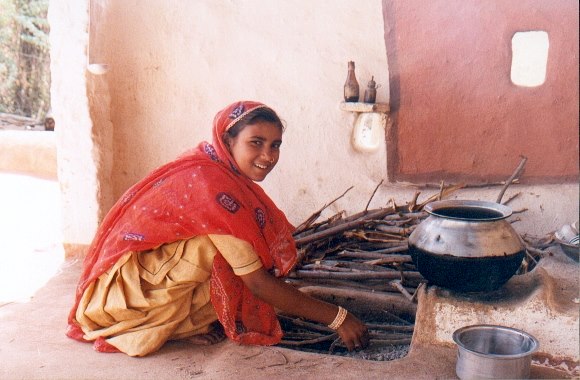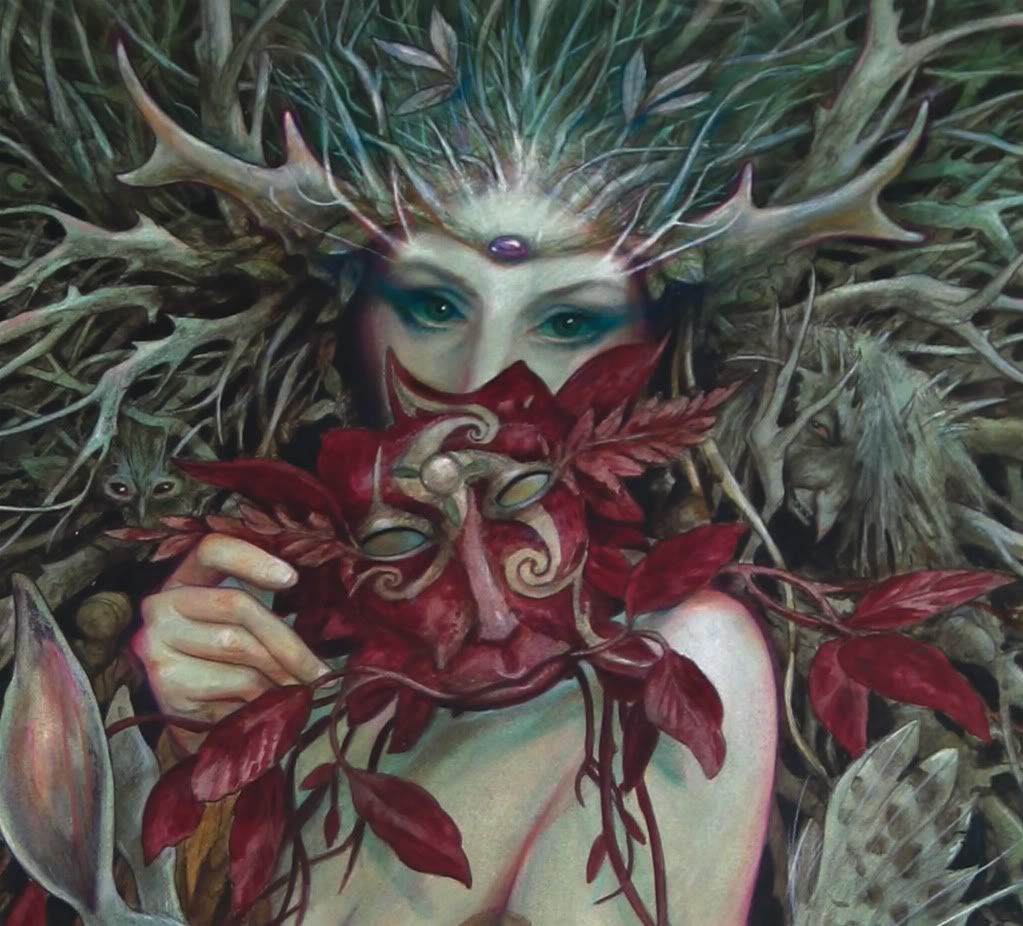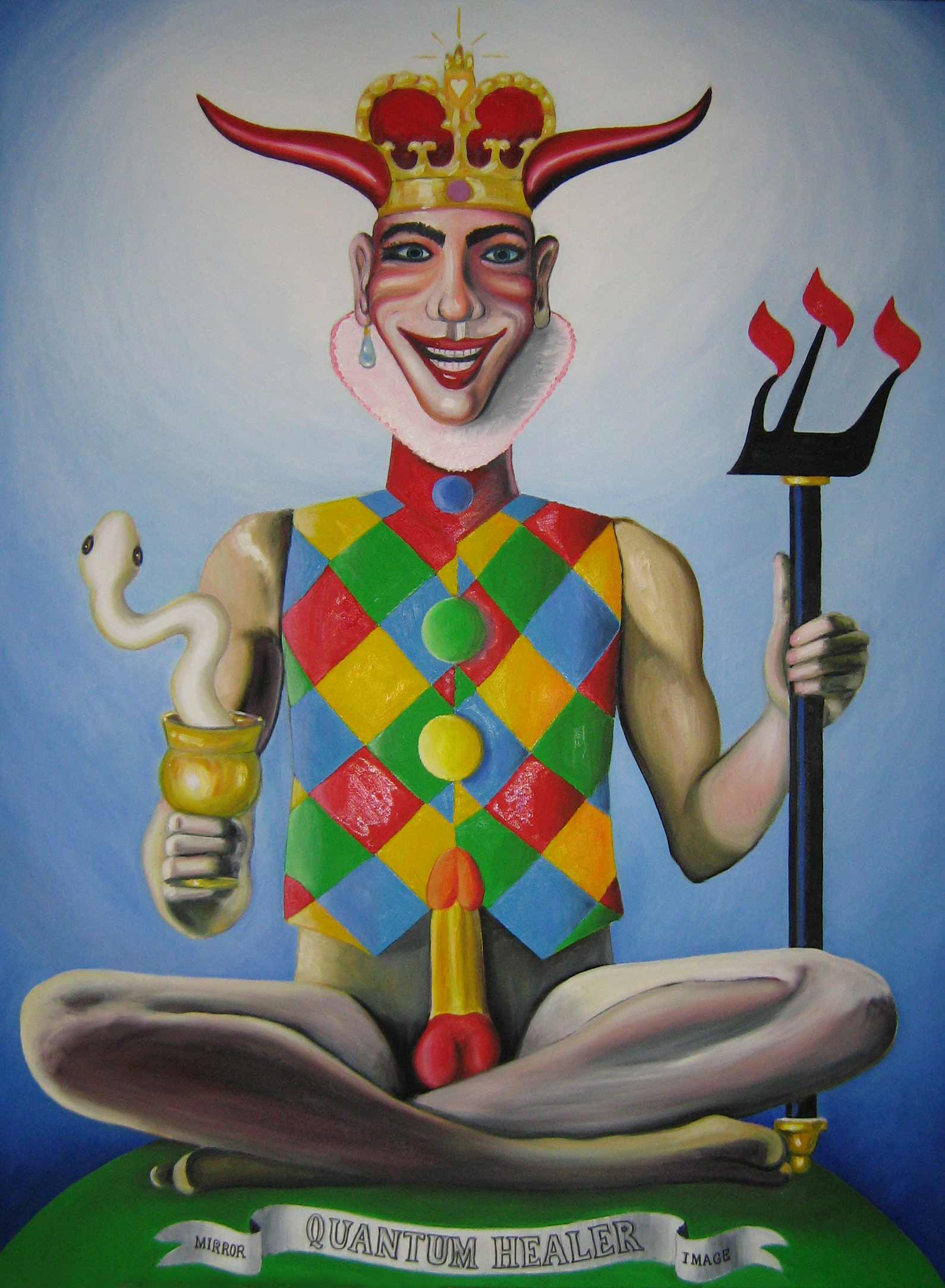
I read this ARTICLE and thought it was so inspiring
Tribal Faiths - Bishnois : Fierce custodians of nature
by Anupama Bhattacharya
The Bishnoi tribe of the western Indian state of Rajasthan have, over centuries, made a unique blend of ecological sense and religious sensibility their faith's cornerstone
Unique Customs
Though worshipping the Hindu diety Vishnu, the Bishnois bury their dead. The idea is to give the body back to the elements.
Bishnoi carpenters never cut trees. They wait for trees to die on their own or fall down during storms.
Every Bishnoi family creates a tank in their field to provide water for animals in the arid summer months.
Even though much of their standing crop is eaten by deer herds, no Bishnoi ever chases a deer away.
Bishnois consider it a great pride to be able to die saving trees or animals.
Though propounders of peace and non-violence, Bishnois can become extremely violent if any animal or tree is harmed in their area.
The Thar desert in India is full of ironies—one of them being the Bishnoi community of Rajasthan. Here, peace is maintained with aggression and robust health rubs shoulders with regular famine. Here penniless women flaunt heavy gold jewelery and wild animals leave the supposed security of jungles to stroll around village huts and farmlands.
Not to mention the fact that the Bishnois worship nature in all its manifestations. Not the ripe, yielding nature of ancient pagan societies, but the ruthless and demanding desert where a desolate horizon meets a blazing sky. Here, women suckle motherless deer, die to save trees, go hungry to provide food for animals and live a strictly sattvic (simple) life advocated by their guru Jambaji.
Jambaji, or Jambeshwar Bhagavan, born in 1451 in one of the warrior sects of Rajasthan, was soon disillusioned by communal riots between Muslim invaders and the native Hindus. However, instead of wallowing in despair, he went ahead to form a religion of peace based on 29 (bish: twenty, noi: nine) principles that included compassion for all living beings, cleanliness, devotion, vegetarian diet and truthfulness. Thus, the Bishnois came into being.

"It was actually a clever ploy," says Maharaja Swaroop Singh, vice-president of the Heritage Hotels, India, and former MLA of the Looni (Bishnoi) constituency in Rajasthan (where the Bishnoi population is concentrated). He has worked closely with the tribe for the last 36 years.
"Jambaji knew that to form a successful religion, he had to put in both Hindu and Muslim elements. So he asked the Bishnois to worship Vishnu and bury their dead. The idea, of course, is to give the dead back to the elements. We Hindus use the fire element, the Muslims use the earth element."
The Bishnois, however, have a different explanation. Says Dev Ram of Guda, one of the largest Bishnoi villages in Jodhpur district, Rajasthan: "Cremating the dead requires wood. But Jambaji said that killing a live tree to get rid of a dead body is ridiculous." So the Bishnois bury their dead without so much as a memorial. "We let the earth take back what it gave to us," adds Dev Ram. What surprises you as you approach a Bishnoi village is the sheer freedom with which spotted deer, blue bulls, and black bucks race along the roadside or frolic in the open fields. In fact, during our approximately 50 minutes drive from Jodhpur to Guda, we must have seen hundreds of deer and antelopes, some actually crossing the road ahead of us.

"Animals are sacred," says Bana Ram of Guda. "Before he passed away, Jambaji told us that in his absence, the black buck should be revered as his manifestation. That belief continues. Hunting black buck for us is like killing our guru. One call of 'Shikar! (the hunt)' and 500 villagers will assemble here this moment to teach the offenders a lesson. We'll kill our own children before we let these animals be killed."

Which is why the worst thing to happen to a hunter is being caught by the Bishnois. "Once, an Indian Air Force captain was caught hunting. We stripped him and forced him to lie down on the hot sand in the middle of summer. He'd never dream of hunting again," adds Bana Ram.
This ruthless protection of animals is part of the Bishnoi culture. An extremely aggressive race, they fight for wildlife and environment with a vengeance. In fact, we were warned against going to the villages by the Deputy Conservator of Forests, Wildlife Division, M.L. Sonal. "The contribution of Bishnois to wildlife protection is almost 100 per cent. But they can be dangerous if angered," says he.
But our reception in the Bishnoi villages, though initially suspicious, was soon friendly and warm. "You must tell others how fragile these animals are," said a village elder, holding the picture of a black buck. "They are so delicate that most often they die of fright. We try our best to save these gentle creatures but what can we do against so many hunters? They are lured by the people of Jodhpur who don't hesitate to get these animals killed for easy money."

As we take a tour around the village, we come across giggling women in colorful clothes, sturdy men in their traditional white dhoti-kurtas zooming around on their motorbikes, sparkling clean mud houses and an occasional carpenter carving wood with intense concentration. "Most of us here are either farmers or wood/stone carvers, goldsmiths and milkmen," says Maunlal Suta, a carpenter from Guda. "This art runs in the family. We have been carving wood for generations. Now I'm training my son to do the same."
Wood carving? But isn't it against Jambaji's 29 principles to cut trees?
"We never cut trees," explains Suta. "We wait till a tree dies on its own or falls down during a storm. This work that you see here," he points at a pile of carved wood for doors, windows and bedposts, "has been done over many years, waiting patiently for wood."
Patience, actually, is the catchword in this simple and dedicated community. "We have only four months of farming," says Johra Ram, community head of a Bishnoi village. "The rest of the year we just sit around and hope the food will last." To add to that, herds of deer end up eating much of the standing crop. "Earlier, almost 30 to 50 per cent of the crop was destroyed by animals. Now it has decreased to about 15 per cent," informs H.L. Meena, Conservator Forest, Jodhpur.

But not a stick is raised to chase away the animals. "We would willingly go hungry to feed the animals," says Bana Ram. "We believe in the co-existence of life. Our guru said that those who die saving innocent animals or trees will go to heaven. For us, animals are the avatars of divinity." Which is why, in the water-starved desert, each Bishnoi family creates a tank in their field to provide water for deer in the arid summer months.
Much of the lifestyle of the community has its basis in the 29 principles of Jambaji. "Our guru forbade us to get addicted, be it smoking, tobacco chewing, drugs or alcohol. Even tea is considered a vice," says Teja Ram. "He also asked us to consume plenty of milk and milk products and home grown cereals. We never eat outside. Even when going on long trips, we either cook or pack food from home."

Which explains the robust health of this community in spite
of recurring famines. Here, though women are traditionally limited to household chores, they play a dominant role. "Women are the symbol of creation. Which is why guruji asked them to wear vibrant colors such as red and orange," explains Bhanu Ram. "Men wear white because it is symbolic of cleanliness and austerity."
Bishnois also have a strange interconnection between death and festivity. Whenever the head of a family dies, all unmarried girls, irrespective of their age, are married off on the 12th day. "On the face of it," says Teja Ram, "guruji started this custom to limit expenses during weddings. But it also has deeper implications. For us, death is a way of life. One person dies, the next generation takes his place and the cycle continues. We believe that whatever you do in this life, you pay for it in the next birth." The marriage of minors, however, as Teja Ram is quick to point out, "is not practiced anymore since we understand that it is detrimental to their development".

Living amidst the barren wastelands interspersed with khejri and babool trees, the Bishnois are a proud race. "We don't get any help from the government and don't want any," says Johra Ram. "Any change in the world has to begin within the society. All this talk about nature and wildlife protection would be more effective if each individual was to believe in the earth as a living, breathing entity and fight for its survival the way we do." He narrates the story of Amrita Devi, a Bishnoi woman who, along with more than 366 other Bishnois, died saving trees. "About 200 years back, Maharaja Abhay Singh of Jodhpur required wood for his palace. So he sent his soldiers to cut trees. Amrita Devi and other villagers hugged the branches while the soldiers chopped them down with the trees. This is still remembered as the great Khejarli sacrifice."

Such stories abound in the Bishnoi community. In fact, the Bishnoi pantheon has more martyrs who died for the sake of nature than gods. And the trend shows no signs of diminishing with time. "What makes me proud," says Bana Ram, "is that the next generation is even more committed to nature than we are." As if on cue, a little boy who can hardly keep pace as we walk around the village, tugs at my sleeve and says: "I'll never let anybody kill these animals."
Strange dedication, this. A small community spread over the northwestern states of India, including Gujarat, Haryana, Madhya Pradesh, Uttar Pradesh besides Rajasthan, the Bishnois have contributed more to nature and wildlife protection than the entire country put together. They have learnt, with time and hardships, how to nurture nature and grow with it instead of exploiting it.

As we turn back from the village, we come across a Bishnoi woman quietly nursing a fawn that was wounded by a dog. Nearby, her little daughter plays. Outside, herds of deer saunter in the fields or take a nap in the mellow afternoon sun. Can this be for real, you wonder? Perhaps not, at least not in a world where, in the manner of King Lear's gods, we kill animals for our sport. But reality, as the scriptures say, is relative. So, amidst the reality of corruption and crime, a community dedicated to nature struggles to survive, teaching, along the way, a few lessons in harmonious co-existence.



















































